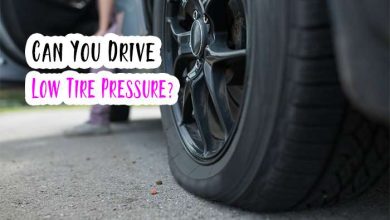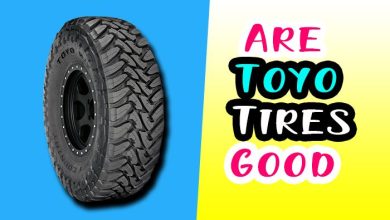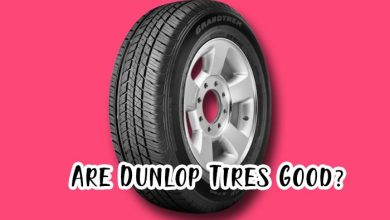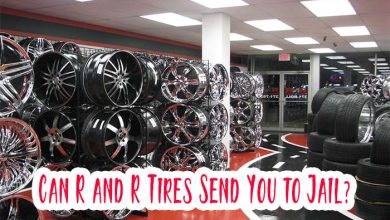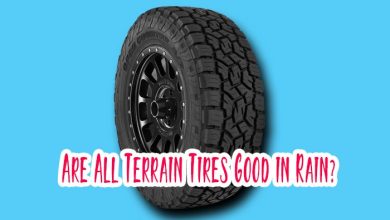Bald Tires vs New Tires: A Tire Expert’s Guide
As a tire aficionado with an intimate understanding of how the rubber meets the road, let’s dive into the intriguing world of bald tires vs new tires. It’s not just about aesthetics; it’s about safety, performance, and getting the most out of your vehicle. So buckle up (pun intended), and let’s roll into the nitty-gritty of this tire tale.
Read Also: All Season VS Mud And Snow Tires
Signs of Bald Tires
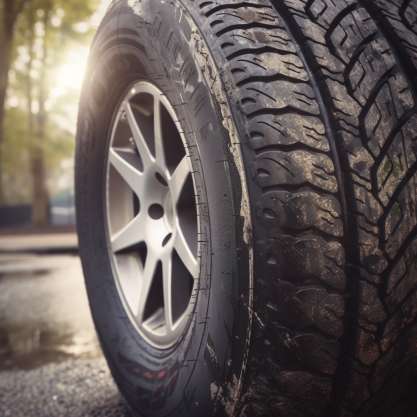
1. Tread Tattle:
The first sign that your tires might be waving the white flag is the tread depth. A simple penny can be your diagnostic tool. Place it upside down in the tread grooves. If you can see the top of Lincoln’s head, it’s time to bid farewell to those treads.
2. Uneven Wear Woes:
Is your tire wearing out like a mismatched pair of shoes? Uneven tread wear is a red flag. It’s not just about the thickness; it’s about how evenly your tires are embracing the road. If it looks like they’re favoring one side, it’s time for some tire therapy.
3. Performance Potholes:
Feel a bit of a wobble or shake, especially at higher speeds? Bald tires might be the culprits. Tires with worn-out treads lose their grip, compromising your vehicle’s stability. It’s not just a bump in the road; it’s a sign to check those tires pronto.
Bald Tires vs New Tires

1. Traction Talk:
Picture this: a tire with a bald spot trying to dance on a wet surface—it’s slipping and sliding like a novice ice skater. Traction is the name of the game, and bald tires simply don’t play well. New tires, on the other hand, come with pristine treads, ready to grip the road with gusto.
2. Road Noise Rundown:
Ever noticed your vehicle becoming a bit more vocal on the road? Bald tires can turn your smooth ride into a noisy affair. The lack of tread means more direct contact with the road, translating every pebble and bump into a conversation between your tires and the asphalt. New tires? They keep it hush-hush, providing a serene driving experience.
Read Also: Are All Terrain Tires Good in Rain?
3. Economic Efficiency:
Yes, new tires might seem like a dent in the wallet but think of it as a long-term investment. Bald tires decrease fuel efficiency as your engine works harder to compensate for the loss of traction. New tires not only enhance safety but also contribute to a more fuel-efficient and cost-effective journey.
| Feature | Bald Tires | New Tires |
|---|---|---|
| Tread depth | Less than 2/32 inches | 11/32 inches or more |
| Grip | Poor on all surfaces, especially in wet weather | Good on all surfaces, including in wet weather |
| Braking performance | Increased stopping distance, especially in wet weather | Shorter stopping distance, even in wet weather |
| Hydroplaning resistance | Poor, more likely to hydroplane in wet weather | Good, less likely to hydroplane in wet weather |
| Fuel efficiency | Poor, due to increased rolling resistance | Good, due to decreased rolling resistance |
| Noise level | High, due to increased road noise | Low, due to decreased road noise |
| Ride quality | Bumpy, due to reduced tread depth | Smooth, due to increased tread depth |
| Safety | Dangerous, especially in wet weather | Safe, even in wet weather |
| Cost | Cheaper upfront cost, but more expensive to replace more often | More expensive upfront cost, but less expensive to replace less often |
| Lifespan | Shorter, due to increased wear and tear | Longer, due to decreased wear and tear |
When to Replace Tires?
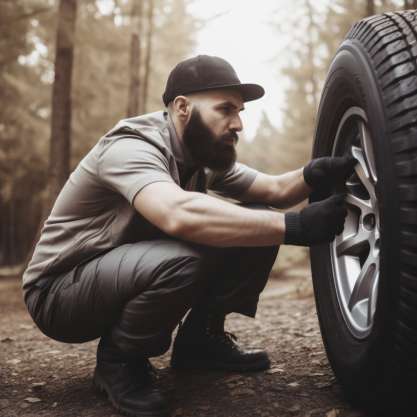
1. Mileage Metrics:
Every tire has a mileage sweet spot. As a rule of thumb, most experts recommend replacing tires every 50,000 miles. However, this can vary based on your driving habits and the type of tires you have. Keep an eye on your odometer; when it hits that milestone, it might be time to bid farewell to your trusted treads.
2. Time Tells:
Even if you’re not clocking in the miles, time can be a tire’s adversary. Rubber deteriorates over time, losing its flexibility and grip. If your tires have been loyal companions for over six years, it’s worth considering a tire retirement party, regardless of the mileage.
3. Visual Vigilance:
Sometimes, it’s all in the eyes. Regularly inspect your tires for visible wear, cuts, or bulges. If they resemble worn-out shoes, it’s time for a tire wardrobe upgrade.
Read Also: Why You Should Always Put A Plastic Bottle On Your Tires When Parked?
Conclusion
In the grand symphony of driving, your tires are the percussion, providing the rhythm and harmony for a safe and enjoyable journey. Whether you opt for the bald and bold or the fresh and aggressive, remember that tire care is the key to a smooth ride.
Share your tire tales, and let’s keep the conversation rolling. Happy and safe driving!
Related Post: BFGoodrich vs Michelin Tires
FAQs
Can I replace just one bald tire or change all four?
While it’s technically possible to replace just one tire, changing all four is advisable to maintain balanced traction and performance. Mixing new and old tires can lead to uneven wear and compromise safety.
Are there specific seasons when it’s more critical to check for bald tires?
Yes, it’s crucial to check your tires before winter and summer. Worn-out tires struggle in extreme weather conditions. Adequate tread depth ensures better traction on snowy or wet roads, keeping you safe in challenging conditions.
How can I extend the lifespan of my tires?
Regular tire maintenance is critical. Keep them properly inflated, rotate them regularly, and ensure your vehicle is aligned. Avoid aggressive driving habits, and your tires will thank you for a longer and healthier life.
Reference Link:
How to Measure Tire Tread Depth
Glossary
- Tread Depth: The vertical measurement from the top of the tire tread to the bottom of the tire’s deepest grooves.
- Traction: The grip or adhesion of a tire to the road surface.
- Uneven Wear: Irregular distribution of wear on a tire’s tread, often caused by alignment issues or improper inflation.
- Mileage Sweet Spot: The ideal range for optimal tire performance before replacement is recommended.
